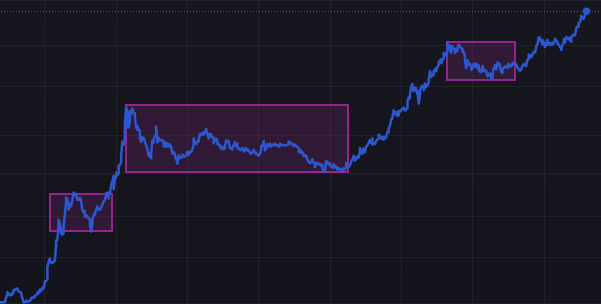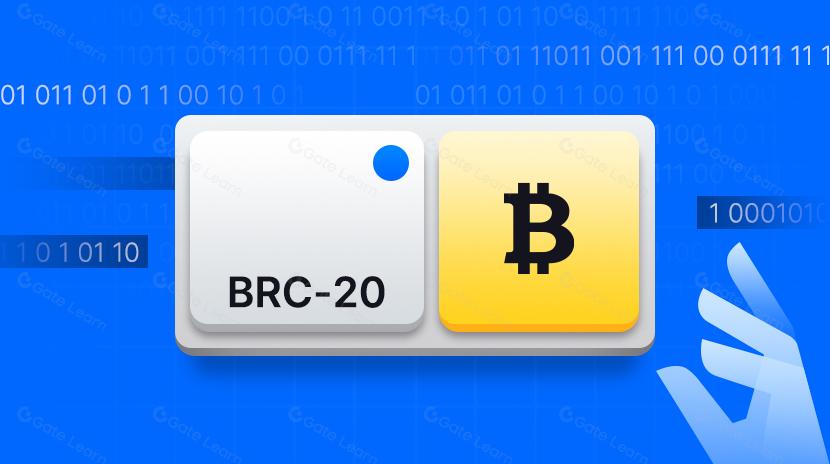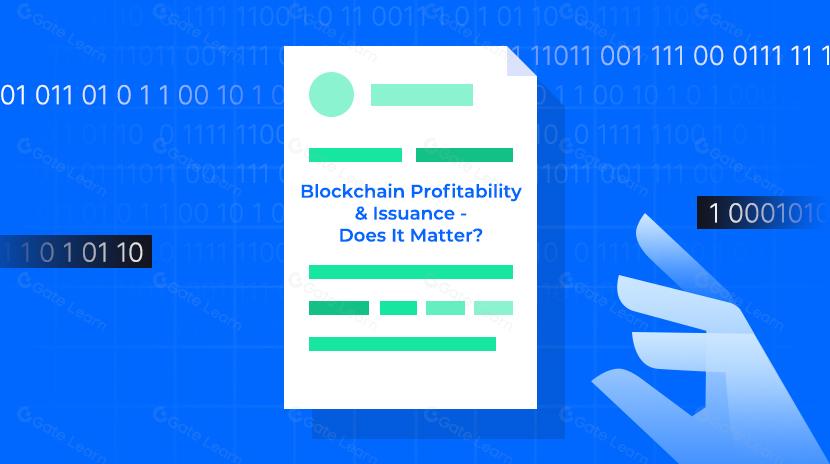Bitcoin: The Ultimate Safe Haven for Long-Term Investors?
A Reflection on Risk, Time, and the Future of Money
I hope today’s topic didn’t catch you off guard. Because reality has dealt a heavy blow to the title’s claim:
- Gold, On March 16, briefly surged past $3,000 per ounce, setting a new all-time high.
- Bitcoin, meanwhile, after dropping from its peak of $102,000, plunged below $77,000 and is now hovering around $84,000.
With such a stark contrast, one might assume gold is a better safe-haven asset than Bitcoin. But let me ask you—are you willing to sell your Bitcoin and buy gold now? Personally, I wouldn’t, and I bet you wouldn’t either. In fact, not only are existing Bitcoin holders reluctant to sell, but new investors continue to enter the market in large numbers. Take a look at the chart below.

From the chart above, you will find that even when Bitcoin was at a historical low of 78,000, there were still 330,000 new Bitcoin addresses that day. Obviously, behind the contradictions, there must be unknown secrets. You made the right decision not to sell Bitcoin and buy gold, and today I will tell you the real reason behind it. Without being too pretentious, the answer is just the title, minus the question mark:
Bitcoin, the ultimate safe haven for long-termists.
Of course, just telling you the answer is not enough. I should also tell you the reason. At the same time, as a popular science column, I should also integrate knowledge with action. So at the end, I will also give you the path and method to implement this concept. If you believe in long-termism and are not the kind of person who wants to get rich by relying on leveraged trading, then please continue reading.
We first need to understand what are safe-haven assets?
1. What Are Safe-Haven Assets?
As the name suggests, safe-haven assets are those that can maintain or even increase their value during periods of market turbulence, economic uncertainty, or other events that may cause traditional investments (such as stocks and bonds) to decline in value. Investors often view these assets as a “safe harbor” to protect their wealth from potential losses during times of risk.
Traditional safe-haven assets typically share the following core characteristics:
Low Volatility or Negative Correlation:An ideal safe-haven asset remains relatively stable when markets fluctuate violently. It may even have a negative correlation with high-risk assets (such as stocks), meaning that when the stock market falls, safe-haven assets tend to rise, providing a hedge against risk.
Store of Value:Safe-haven assets should be capable of maintaining their value over the long term, resisting the erosion of purchasing power caused by inflation. Investors prioritize their wealth preservation ability over short-term high returns.
High Liquidity:The ability to buy and sell quickly at a reasonable price is crucial for safe-haven assets, ensuring that investors can adjust their portfolios flexibly when needed.
- Proven Historical Performance:Assets that have repeatedly demonstrated safe-haven characteristics during past financial crises or economic downturns tend to gain more trust and acceptance among investors.
The three pillars of traditional safe-haven assets:
Gold: As a “hard currency” for millennia, gold’s safe-haven status was solidified by its 70-fold increase in value after the collapse of the Bretton Woods system in 1971. Its physical scarcity (with an estimated 205,000 tons mined globally) and anti-inflation properties (with an average annual return of approximately 7.3% over the past 50 years) make it a classic choice during financial crises.
Government Bonds: Take U.S. Treasury bonds, for example. Their “risk-free” reputation is backed by the creditworthiness of the U.S. government. However, as of 2024, the U.S. national debt has surpassed $35 trillion, and real yields have remained negative for 18 consecutive months, exposing the inflationary risks behind so-called “safe” assets.
Safe-Haven Currencies: The U.S. dollar dominates global financial transactions, accounting for 59% of foreign exchange reserves during the 2020 pandemic crisis. Meanwhile, the Japanese yen maintains its safe-haven status due to Japan’s low interest rate policies (-0.1%), while the Swiss franc benefits from Switzerland’s strict banking secrecy laws.
However, gold has long been regarded as a classic safe-haven asset. Throughout history, during stock market downturns or periods of heightened geopolitical risk, investors have flocked to gold, driving up its price. While gold itself does not generate interest or dividends, its scarcity and historical recognition as a store of value make it a crucial asset for preserving wealth in uncertain times.
That said, as financial markets continue to evolve and investor risk preferences diversify, the definition of a “safe-haven asset” is also changing. Some emerging assets are beginning to demonstrate safe-haven potential in certain conditions, even if they do not fully align with the traditional characteristics of such assets. This is precisely why we are discussing the relationship between Bitcoin and risk hedging today.
The key phrase in the previous paragraph is “investor risk preference.” Because every investor perceives and experiences risk differently, what constitutes risk varies from person to person. For example, I don’t rely on leveraged trading to get rich, so Bitcoin’s price fluctuations have never been a risk or an opportunity for me.
So, what does risk mean to you?
2. The Relativity of Risk
Now, let’s take a broader perspective and examine how risk manifests differently across regions and over time.
Imagine living in different countries—your perception of risk would vary significantly based on your environment. For instance, during Zimbabwe’s economic turmoil, hyperinflation rendered the national currency nearly worthless. For local residents, holding their own currency was the greatest risk, prompting them to convert their assets into more stable foreign currencies or tangible assets whenever possible. Meanwhile, in a country with a stable economy like Switzerland, people are more likely to focus on the long-term preservation of wealth rather than the short-term risk of currency depreciation.
This illustrates the spatial relativity of risk—the same asset carries different levels of risk depending on the economic environment in which it exists.
Similarly, the passage of time profoundly influences our perception of risk. Assets once deemed high-risk may, over time, gain market acceptance and become mainstream, while assets previously considered safe may later reveal new vulnerabilities as circumstances evolve.

Please take a look at the chart above. At first glance, you might assume that such a steep correction must be related to Bitcoin or other cryptocurrencies. But in reality, it’s not—it’s gold.
The safe-haven status of gold is not set in stone. Throughout different historical periods, gold’s price fluctuations and its effectiveness as a hedge have been influenced by a variety of economic and political factors. For instance, while gold has served as a reliable safe haven during some recessions, there have been other times when its performance fell short of expectations.

Looking at the broader historical perspective, you can clearly see that gold underwent significant corrections in the 1970s, 1980s, and 2010s.
So, if we reframe our perspective in terms of time and space, what should today’s long-termists do?
First, we must recognize that a true long-termist does not see making money as the ultimate goal in life. Instead, we all strive to pursue something more meaningful. Outside of work, I choose to educate people about blockchain, while you may choose a different path. But we share a common mindset—we don’t want to be overly consumed by financial concerns. We seek a sustainable, low-maintenance approach to managing our investments—one that doesn’t require chasing high returns or taking unnecessary risks.
That said, as long as we live on this planet, there is one risk that remains inescapable, no matter how much we try to avoid it.
3. Risks of Fiat Currency
Fiat currency, as the name suggests, is money that derives its legal status from government decree and is mandated as the medium of exchange. The banknotes we use daily—such as the U.S. dollar, euro, and Japanese yen—are all fiat currencies. Unlike historical currencies that were backed by physical commodities like gold or silver, modern fiat money holds value solely based on people’s trust in its issuing institution (usually a central bank) and the economic strength of the nation.
3.1 Depreciation
3.1 Depreciation
The fundamental flaw of fiat currency lies in its unlimited supply mechanism. To counter economic downturns, stimulate growth, or manage national debt, governments and central banks often resort to increasing the money supply. While moderate inflation can provide short-term economic benefits, persistent inflation leads to a continuous erosion of purchasing power.
Take the U.S. dollar as an example: after decoupling from gold in 1971, its purchasing power has declined by 98%. In 2024, to address the U.S. debt crisis, the Federal Reserve implemented quantitative easing, causing the M2 money supply to surge by 23%, while actual inflation spiked to 8.5%—far exceeding the 2% policy target. This “inflation tax” is effectively creating a global wealth “time black hole,” with the real return on cash holdings staying negative for 18 consecutive months, translating to an implicit annual purchasing power loss of 6.3%.
Even more concerning is the negative feedback loop between sovereign debt and fiat currency credibility. Global sovereign debt has soared to 356% of GDP, while U.S. national debt has surpassed $35 trillion, eroding its so-called “risk-free” status. The Bank of Japan now holds over 52% of Japanese government bonds, contributing to a 15% collapse in the yen against the U.S. dollar. This process of “debt monetization” is pushing the fiat system to the edge of collapse.
Beyond depreciation, there’s an even more pressing risk to personal financial sovereignty: banks can freeze or restrict access to your funds at any time.
3.2 Capital Controls and Freezing of Funds
Imagine working hard to accumulate wealth, safely stored in a bank account under your legal ownership. In theory, you should have full control over your money. However, in reality, this control is not absolute. As financial intermediaries, banks can impose restrictions or even freeze accounts under certain circumstances—whether due to legal disputes, regulatory compliance, or even internal banking errors.
This indirect control over funds represents a significant risk for fiat currency holders. While your wealth exists in digital form, its ultimate accessibility depends on governments and financial institutions.
- 2013 Cyprus Banking Crisis: To prevent a financial system collapse, Cyprus imposed strict capital controls. Daily withdrawal limits were initially capped at €300. More shockingly, depositors with over €100,000 saw up to 60% of their funds confiscated, with a portion forcibly converted into bank shares. These measures lasted nearly two years, severely restricting citizens’ financial freedom.
- 2011–2015 Argentina’s Foreign Exchange Controls: To curb capital flight and economic instability, Argentina imposed stringent foreign exchange controls, making it nearly impossible for individuals and businesses to buy U.S. dollars. This led to a thriving black market for dollars and forced exporters to hoard agricultural products until the restrictions were lifted.
- 2008–2017 Iceland’s Capital Controls: Following the 2008 financial crisis, Iceland implemented capital controls for nearly a decade to prevent massive capital outflows. These restrictions limited cross-border transactions and foreign currency movements, fearing a collapse of the Icelandic krona. It wasn’t until 2017 that these measures were fully lifted.
- 2017 Venezuela’s Withdrawal Limits: Amid a deepening economic crisis, Venezuela imposed severe withdrawal restrictions. ATMs had a daily withdrawal limit of just 10,000 bolívars, worth less than $1 at the time. Even worse, cash shortages meant that people had to wait in long lines just to withdraw 20,000 bolívars—an amount insufficient for basic daily expenses.
These real-world examples highlight a critical reality: under the fiat system, governments may implement drastic financial controls during economic or political crises, restricting or even freezing personal bank accounts to maintain financial stability or achieve policy objectives. For long-term investors seeking financial security and autonomy, this risk cannot be ignored.
In extreme cases, if a financial crisis or bank failure occurs, depositors could face substantial losses. Although deposit insurance exists, it has coverage limits and cannot guarantee full protection. For those who prioritize greater financial independence and personal sovereignty, this is a serious concern. Now, we can answer the question: Why is Bitcoin the superior safe-haven asset for long-term investors?
4. Why Long-Termists Should Choose Bitcoin
In fact, the first thing we should exclude is fiat currency. Even if it’s the US dollar, Japanese yen, or euro, you should not choose them.
4.1 Fiat Currency vs. Bitcoin
We’ve seen that, in the case of the US dollar, its purchasing power has significantly shrunk since it was decoupled from gold. On the other hand, one of Bitcoin’s most notable features is its fixed total supply. The total limit of 21 million coins is embedded in its underlying code, and this cannot be changed.
Bitcoin’s supply mechanism is the first mathematically sealed monetary contract in human history: every four years, its output is halved, and the total supply will remain at 21 million coins by the year 2140. This programmed deflationary model sharply contrasts with the unlimited over-issuance of fiat currency. Taking 2024 as an example:
- US Dollar: The Federal Reserve expanded its balance sheet by 23% in response to the US debt crisis, the M2 money supply surpassed $22 trillion, and the actual inflation rate surged to 8.5%.
- Bitcoin: After the fourth halving, its annual inflation rate dropped to 0.9%, far lower than gold’s 1.7%.
As discussed earlier, there are risks associated with the potential freezing of fiat currency accounts. Bitcoin’s decentralization feature effectively mitigates this risk. The Bitcoin network is not controlled by any single central entity. Transaction records are stored openly and transparently on the blockchain. No one can tamper with or freeze users’ Bitcoin assets unless the user themselves discloses their private key.
4.2 Treasury Bonds Vs. Bitcoin
Treasury debt, especially sovereign debt like U.S. Treasuries, has long been regarded as a “risk-free asset” in financial markets. This perception is based on the creditworthiness of the country, with investors trusting that the government will be able to repay the bonds it issues. During times of market turmoil, money tends to flow into Treasury bonds in search of safety.
However, for today’s long-term investors, considering government bonds as the ideal safe-haven asset requires more careful thought—especially in the current global economic environment, where some data and facts reveal potential pitfalls hidden behind traditional beliefs.
As previously mentioned, taking U.S. national debt as an example, its size surpassed $35 trillion in 2024. This enormous debt load, coupled with 18 consecutive months of negative real yields, points to a core issue: can national debt still effectively protect against inflation?
Negative real yields mean that, after accounting for inflation, holding these so-called “safe assets” results in a loss of purchasing power. For long-term investors focused on wealth preservation and growth, this is clearly unacceptable.
Moreover, the global sovereign debt load has reached 356% of global GDP, a concerning figure. In some countries, like Japan, the central bank holds more than 50% of the national debt, which has caused the yen’s exchange rate to plummet. This “debt monetization” trend raises questions about the long-term security of assets traditionally considered safe. For long-term investors, pouring significant capital into assets that may be at risk due to a sovereign debt crisis is not wise.
In contrast, Bitcoin, as a decentralized digital asset, derives its value from no single country’s credit. While it carries its own risks, it offers a way to decouple from the traditional financial system. This feature may be particularly attractive to long-term investors who are concerned about the risks associated with sovereign debt.
Of course, Treasury bonds, as low-volatility assets, may offer stability during market turmoil in the short term. However, for those focused on wealth preservation and growth over the next few decades, simply seeking short-term stability may not be enough. What these investors need are assets that can withstand long-term inflation and offer potential for long-term growth. From this perspective, despite Bitcoin’s volatility, its unique scarcity and decentralized nature, along with its immense potential in the digital economy, make it a more compelling long-term safe-haven asset than traditional Treasury bonds.
4.3 Gold Vs. Bitcoin
As noted earlier, gold has delivered an annualized return of around 7.3% over the past 50 years, making it a solid long-term store of value. However, when we look at Bitcoin, its long-term performance becomes even more impressive.
According to backtest data from Curvo.eu (as of March 2025):
- Over the past five years: Bitcoin’s total return was approximately 1067.5%, while gold’s was around 88.8%. Bitcoin’s average annualized return was 63.5%, far surpassing gold’s 13.5%.
- Over the past ten years: Bitcoin’s total return was an astounding 51,259.5%, compared to gold’s 142.7%. In terms of average annualized return, Bitcoin’s was 86.7%, significantly higher than gold’s 9.3%.
Additionally, Nasdaq published an article in September 2024 noting that Bitcoin was the best-performing asset globally over the past decade, with an average annual return of 693%, while gold only returned around 5% during the same period.
Another important factor to consider is Bitcoin’s inflation rate post the fourth halving. Bitcoin’s annual inflation rate stands at just 0.9%, less than half of gold’s rate of 1.7%. Bitcoin’s limited supply will continue to make it increasingly scarce.
Furthermore, portability and storage costs are significant limitations for gold. Holding large quantities of gold requires physical storage, which comes with security risks and high storage costs. Bitcoin, on the other hand, exists digitally, can be stored in various electronic devices, and has almost no storage costs. It is also easily transferable globally, a huge advantage in today’s increasingly globalized world.
Moreover, Bitcoin outshines gold in terms of divisibility. Bitcoin can be divided into eight decimal places (i.e., satoshis), making small transactions and investments far more flexible and convenient. Gold, on the other hand, has higher transaction and division costs.
Most importantly, Bitcoin, as a digital asset born in the Internet age, offers superior transparency and verifiability. All Bitcoin transactions are recorded on a public blockchain, accessible for verification by anyone, significantly reducing the risk of fraud and forgery. In contrast, verifying the authenticity and purity of gold can sometimes be challenging.
From a market capitalization perspective, while gold’s total market value still far exceeds Bitcoin’s, Bitcoin’s growth rate is striking. Currently, Bitcoin’s market value is nearing $2 trillion, while gold’s estimated market value is about $18.5 trillion. According to Galaxy Research, Bitcoin’s market value is expected to reach 20% of gold’s market value by 2025, indicating strong market expectations for Bitcoin’s future growth.

Finally, in terms of adoption rate, gold has long been accepted as a mature asset, while Bitcoin, as an emerging digital asset, currently has an adoption rate of only 3%. This suggests that Bitcoin has a much broader future ahead. As I mentioned in “Above the Trend, Between Cycles: A Cold Reflection on Bitcoin’s ‘Correction Moment’,“ an adoption rate of 3% is comparable to the internet in 1990, online banking in 1996, and social media in 2005.
Long-term investors choose Bitcoin not because they want to completely abandon gold, but because they recognize that in the future, Bitcoin may have greater potential than gold in combating fiat currency devaluation, protecting personal wealth, and seizing opportunities in the digital economy. We are willing to embrace its volatility in exchange for potential future returns.
So, how should long-term investors approach Bitcoin? Ensure you have enough for living expenses and start Dollar-Cost Averaging (DCA).
5. Why is DCA the Investment Strategy for Long-Term Investors?
DCA, or Dollar-Cost Averaging, is an investment strategy where a fixed amount of money is invested at regular intervals (e.g., weekly or monthly) to purchase a particular asset, regardless of its price.
As we’ve discussed, Bitcoin, as an emerging asset, has much higher price volatility compared to traditional safe-haven assets like gold or government bonds. While we are confident in Bitcoin’s value over the long term, its short-term price fluctuations are difficult to predict. For long-term investors, the goal is not to capitalize on short-term market swings, but rather to focus on long-term returns over the coming years or even decades. In this context, the DCA strategy becomes especially important and effective.
The most immediate benefit of DCA is that it alleviates the pressure of trying to “time the bottom.” No one can predict the market’s lowest point with certainty—even professional traders often make mistakes. Long-term investors understand this and prioritize long-term trends over short-term volatility. With DCA, they don’t need to guess when the market will bottom out; they simply follow a set plan and invest consistently.
Moreover, DCA helps overcome common emotional biases. During market rallies, investors often buy in fear of missing out, while during declines, they may panic and sell. DCA’s regular investment approach helps investors remain calm and rational, avoiding the influence of short-term emotions, which makes it easier to stick to a long-term strategy.
Based on data from 2015-2025:
- $100 per month DCA: Total investment of $12,000, final value of $111,000, with an annualized return of 25%.
- S&P 500 Index DCA over the same period: Final value of only $21,000, with an annualized return of 9.8%.
This difference stems from Bitcoin’s exponential growth characteristics. DCA (Dollar-Cost Averaging) in the Bitcoin ecosystem functions like “space-time arbitrage” — exchanging the depreciation rate of fiat currency for Bitcoin’s scarcity premium.
Looking at Bitcoin’s historical price trends, we can see that despite experiencing significant corrections, its long-term trend remains upward. If an investor had consistently followed the DCA strategy from Bitcoin’s inception, regardless of how many times the price was “cut in half,” their final returns would have been substantial. Of course, past performance doesn’t guarantee future results, but the essence of the DCA strategy lies in diversifying risk and minimizing the impact of timing a single purchase on long-term returns.
For long-term investors, what we seek is a “set-and-forget” investment strategy. We don’t want to spend excessive time and energy analyzing and predicting the market. The DCA strategy perfectly aligns with this need. Once the investment plan is established, it can be automatically executed at regular intervals, requiring minimal effort. This allows investors to redirect more time and energy into more meaningful pursuits, such as career development, family life, or social contributions.
Therefore, DCA is undoubtedly an ideal investment strategy for long-term investors who believe in Bitcoin’s long-term value and wish to engage in it with minimal hassle. You may wonder, what should be done with the money that wasn’t invested in Bitcoin? It’s simple — convert it into USD stablecoins. Here’s a zero-based tutorial on stablecoins.
In the cryptocurrency market, DCA is already a relatively mature service, with various methods available. If you want to buy Bitcoin directly on a centralized exchange and send it to a cold wallet, here are two zero-based tutorials: one on how to buy Bitcoin, and the other on how to send Bitcoin to a cold wallet.
What I recommend is the ARP2 project from “Airdrop Reference.“ With this project, you can not only invest in Bitcoin, but also benefit from automatic rebalancing, which provides additional returns. For detailed operations, see here.

ARP2 still offers a 43.77% return even as Bitcoin has experienced a significant drop. The only downside of this project is that you need to manually complete each investment.
Conclusion: The Awakening of Value Across Time Dimensions
In the monetary epic of human civilization, gold took thousands of years to forge the “temple of value,” fiat currencies have woven the “illusion of flow” with national credit, and Bitcoin is reconstructing the “digital Tower of Babel” with mathematics and code. The debate over safe-haven assets is fundamentally a battle between human nature and time — gold represents the ancient belief in physical scarcity, while Bitcoin points to a future consensus on digital absolutes.
For long-termists, the choice is never just about asset replacement, but a redefinition of monetary sovereignty. When fiat currencies’ “inflation tax” erodes wealth and gold’s “geographical shackles” limit liquidity, Bitcoin offers a third way for individuals to combat systemic risks through the transparency of “code is law” and the control of “private key is sovereignty.”
History has repeatedly shown that true risk aversion is not about fleeing volatility, but about anchoring the future. Just as time will eventually expose the vanity of all bubbles, it will also reveal the true light of lasting value. Bitcoin, a decentralized network based on mathematics and driven by consensus, is proving its potential to surpass traditional safe-haven assets, with its scarcity, verifiability, and growing adoption standing the test of time.
Choosing Bitcoin is not a short-term gamble, but a belief in the future. It represents a new perspective on wealth — one that does not depend on centralized authority but returns control of value to the individual. For those of us who are long-termists, unwilling to squander our lives chasing fleeting wealth, Bitcoin may be the key to unlocking the future’s value.
Let us set sail with the patience of time as our sail and long-termism as our rudder, heading toward a more independent and secure shore of wealth. (This article is forwarded from the WeChat public account Airdrop Reference, WeChat ID: ktckok)
Disclaimer:
- This article is reproduced from [Mirror], and the copyright belongs to the original author [Daii], if you have any objection to the reprint, please contact Gate Learn team, the team will handle it as soon as possible according to relevant procedures.
- Disclaimer: The views and opinions expressed in this article represent only the author’s personal views and do not constitute any investment advice.
- Other language versions of the article are translated by the Gate Learn team and are not mentioned in Gate.io, the translated article may not be reproduced, distributed or plagiarized.
Related Articles

In-depth Explanation of Yala: Building a Modular DeFi Yield Aggregator with $YU Stablecoin as a Medium

BTC and Projects in The BRC-20 Ecosystem

Reflections on Ethereum Governance Following the 3074 Saga

What Is a Cold Wallet?

Blockchain Profitability & Issuance - Does It Matter?
